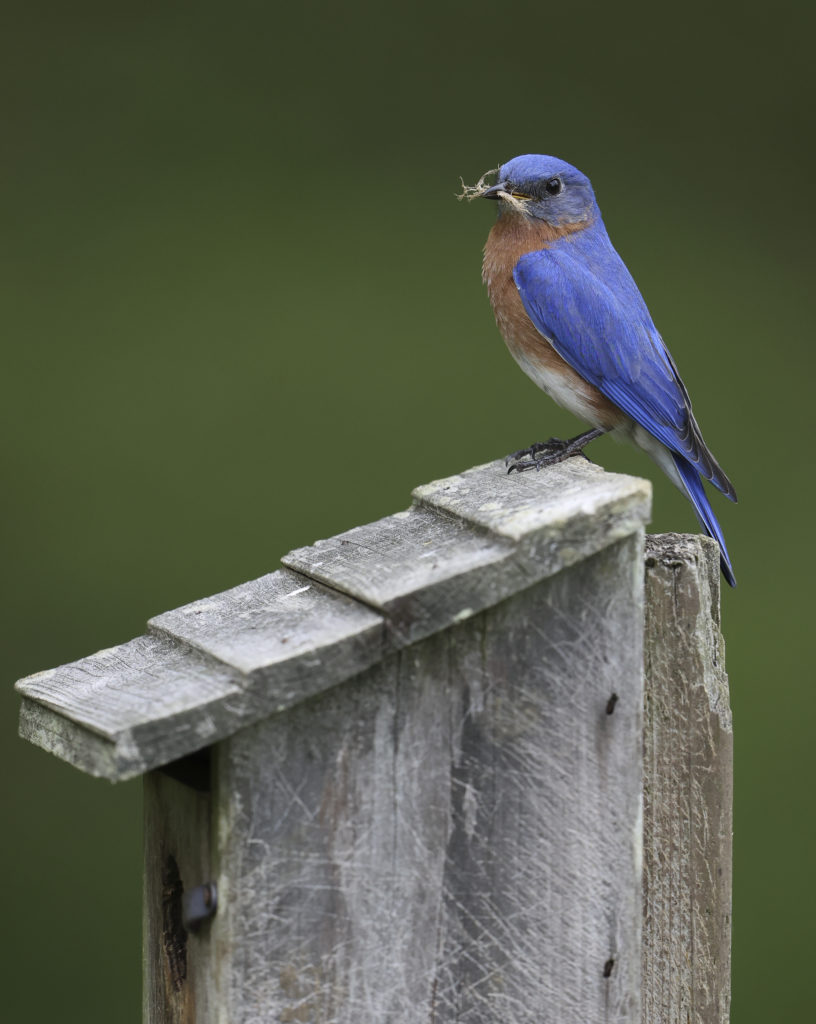Creature Feature: A Home of Their Own for Spring

By Wayne Bierbaum
Today I was amused by the intense inspection my new small birdhouse was getting by a pair of Carolina chickadees. The male went first and seemed to look at every nail and every edge, inside and out, from top to bottom. He was hanging upside down under the bow for the longest time. When he was done, the female did her own inspection, which included a long detailed look at the interior.
This was the first time I have put up a chickadee box. My aim was to divert their attention away from my bluebird box. The chickadees were spending too much time around there and the bluebirds were obviously irritated.
I made the chickadee home from scrap wood and used screws instead of glue to hold it together. The instructions for nesting boxes are readily available online and the construction was easy. Of course, it is important to use untreated wood and avoid smelly paint or glue.
Each cavity nesting bird, like a bluebird or wood duck, likes a certain specification in their homes. Chickadees like the entrance to be 3 to 6 inches above the bottom of the box. The entrance is more attractive when it is 1.125 to 1.5 inches in diameter.
Nesting boxes should have easy access for cleaning. After each brood has left the nest the box should be thoroughly cleaned because mites, flies, and ants will multiple in an old nest. When you clean a nest, avoid getting any dust or debris on your skin as the mites might bite you. Certainly avoid inhaling any dust from a bird’s nest as a fungus, Aspergillosis, may be growing there, too, and it can cause a chronic lung infection.
The placement of a nesting box is important, too. Most birds, like the chickadee, like to nest near cover. A few, such as bluebirds and tree swallows like to have nesting boxes away from other structures and usually at the edge of a field or other open areas.
I have had crazy female bluebirds nesting in the backyard. One spent a lot of time attacking her image in the window. Another—or maybe the same bird—made a nest and laid four eggs but then made another nest on top of the first and laid three more eggs. When I discovered the double nest, it was too late for all the eggs. I cleaned the box and left it open most of the summer. In the late summer, I think two babies fledged, but I do believe it was a different momma bird.
Protecting the eggs and young from predators can be challenging. I have seen evidence of raccoons opening the fasteners to a bluebird box, heard of a black snake bridging a 3-foot gap to get to a nest and was witness to a crow pulling near-fledgling birds out of a bluebird box as the little one tried to see who landed on the roof of its home.
I put up a critter barrier on the pole that holds the bluebird box. Putting packaging tape on the pole can stop ant infestation; ants will kill newborn birds. Manipulate the tape into a cone shape with one cone upright like an ice cream cone with the sticky side facing out, and then fill that cone with petroleum jelly. Place another cone upside down with the sticky side on the inside.
If you are interested in building bird boxes or putting some up around your property, Cornell Ornithology has a good educational site called Nest Watch (nestwatch.org/learn/all-about-birdhouses/). There are over 50 birdhouse designs and lots of information for troubleshooting.
